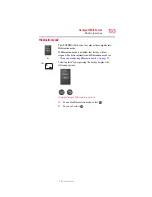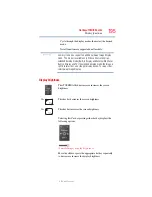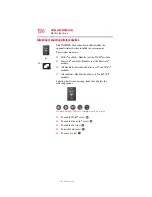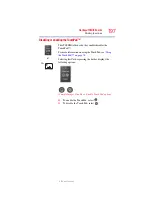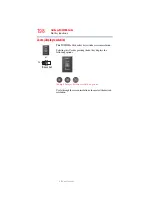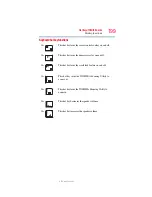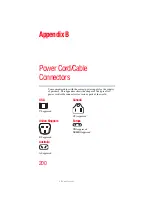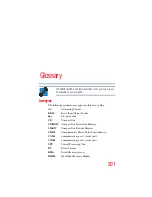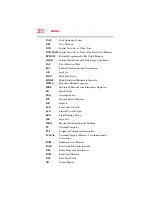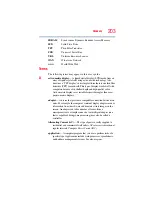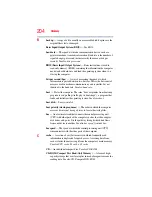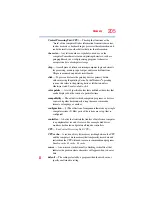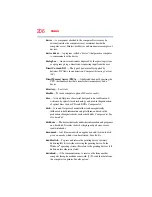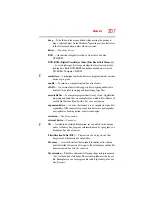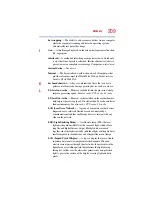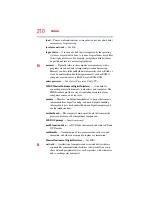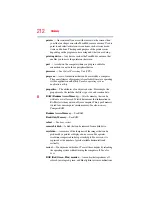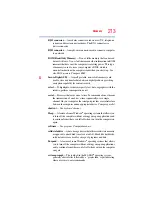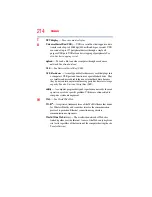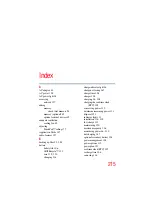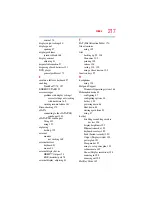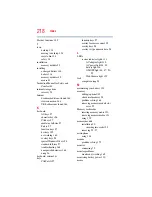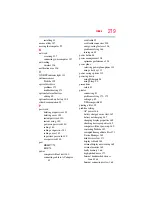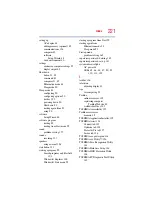
206
Glossary
device — A component attached to the computer. Devices may be
external (outside the computer’s case) or internal (inside the
computer’s case). Printers, disk drives, and modems are examples of
devices.
device driver — A program (called a “driver”) that permits a computer
to communicate with a device.
dialog box — An on-screen window displayed by the operating system
or a program giving a direction or requesting input from the user.
Direct Current (DC) — The type of power usually supplied by
batteries. DC flows in one direction. Compare Alternating Current
(AC).
Direct Memory Access (DMA) — A dedicated channel, bypassing the
CPU, that enables direct data transfer between memory and a
device.
directory — See folder.
disable — To turn a computer option off. See also enable.
disc — A round, flat piece of material, designed to be read from and
written to by optical (laser) technology, and used in the production
of optical discs, such as CDs and DVDs. Compare disk.
disk — A round, flat piece of material that can be magnetically
influenced to hold information in digital form, and used in the
production of magnetic disks, such as hard disks. Compare disc. See
also hard disk.
disk drive — The device that reads and writes information and programs
on a hard disk. It rotates the disk at high speed past one or more
read/write heads.
document — Any file created with an application and, if saved to disk,
given a name by which it can be retrieved. See also file.
double-click — To press and release the pointing device’s primary
button rapidly twice without moving the pointing device. In the
Windows
®
operating system, this refers to the pointing device’s left
button, unless otherwise stated.
download — (1) In communications, to receive a file from another
computer through a modem or network. (2) To send font data from
the computer to a printer. See also upload.


